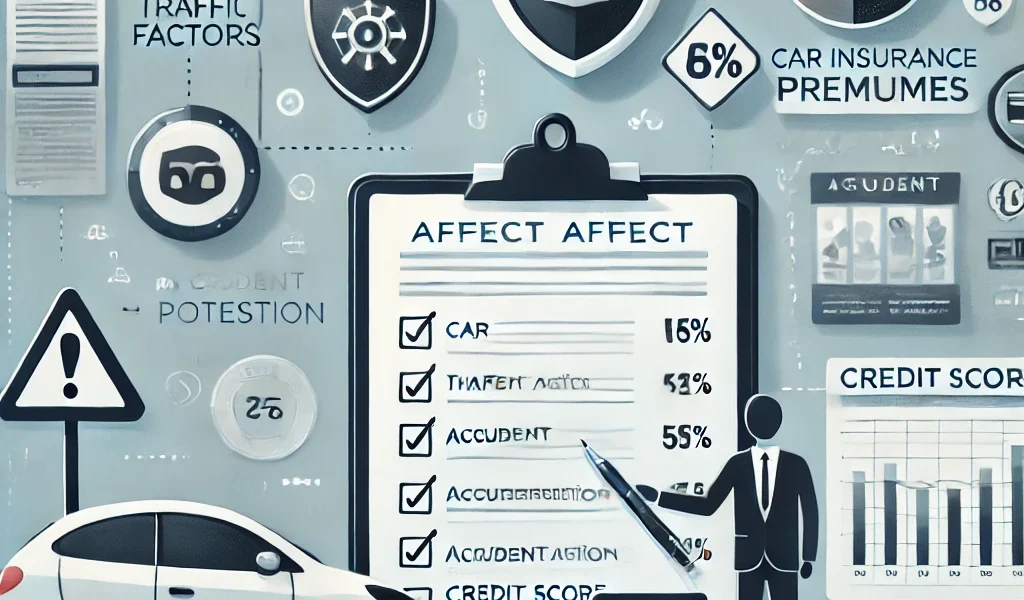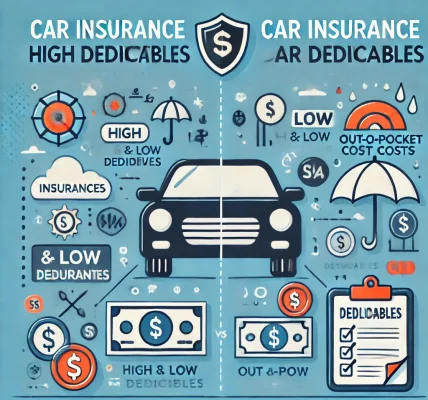Car insurance premiums vary significantly based on several factors. Insurers assess various risks before determining the cost of coverage. Understanding these factors can help you make informed decisions to reduce your premiums while maintaining adequate coverage. This guide explores the top elements influencing car insurance premiums and how you can manage them effectively.
1. Driver’s Age and Experience
- Young and inexperienced drivers typically pay higher premiums because they are statistically more likely to be involved in accidents.
- Older, more experienced drivers usually enjoy lower rates due to their proven driving history.
- Some insurers offer discounts for completing driver training programs or defensive driving courses.
2. Driving Record and Claims History
- A clean driving record with no traffic violations or accident claims leads to lower premiums.
- Frequent traffic offenses such as speeding, reckless driving, or DUIs can increase insurance costs significantly.
- Filing multiple claims in a short period may signal a high-risk driver, resulting in higher premiums or policy cancellations.
3. Vehicle Make, Model, and Age
- Luxury, sports, or high-performance vehicles cost more to insure due to higher repair or replacement costs.
- Older cars may have lower premiums, especially if their market value is low, reducing the need for comprehensive or collision coverage.
- Safety features such as anti-lock brakes, airbags, and anti-theft systems can lead to discounts.
4. Location and Parking Habits
- Urban areas with higher crime rates and traffic congestion often result in higher premiums compared to rural areas.
- If you park your car in a secure garage rather than on the street, you may qualify for lower rates.
- States and countries have different insurance regulations, which also impact premium costs.
5. Annual Mileage and Usage
- The more you drive, the higher the risk of accidents, leading to increased premiums.
- If you use your car for business or ridesharing, insurers may charge higher rates.
- Some companies offer low-mileage discounts for those who drive less.
6. Coverage Type and Deductibles
- Higher coverage limits and additional add-ons (such as roadside assistance or rental car coverage) increase premiums.
- Choosing a higher deductible (the amount you pay out-of-pocket before insurance kicks in) can lower your premium, but it also means higher costs in case of a claim.
7. Credit Score (in Some Regions)
- In many countries, insurers use credit scores to determine the likelihood of a policyholder filing a claim.
- A higher credit score can result in lower premiums, while a poor credit score may increase rates.
- Maintaining good financial habits can positively impact your insurance costs.
8. Gender and Marital Status
- Statistics show that young male drivers tend to have higher accident rates, leading to higher premiums.
- Married individuals often receive lower premiums as they are considered more responsible and less likely to engage in risky driving behavior.
9. Claim Settlement History with the Insurer
- If you have previously made multiple claims with the same insurer, they might classify you as high risk and raise your premium.
- A long-term policyholder with minimal claims may receive loyalty discounts or better renewal rates.
10. Policy Bundling and Discounts
- Many insurers offer discounts for bundling multiple policies (such as home and auto insurance).
- Safe driving discounts, anti-theft device discounts, and multi-vehicle discounts can help reduce premium costs.
- Some insurers provide telematics or usage-based discounts for monitoring safe driving behavior.
11. No-Claim Bonus (NCB)
- If you don’t make a claim during a policy year, you may receive an NCB discount on renewal.
- Over time, NCB can significantly lower your premium, making it beneficial to avoid minor claims that you can cover yourself.
12. Government Regulations and State Laws
- Insurance rates vary by state or country due to different legal requirements and regulatory frameworks.
- Minimum liability coverage limits are set by local laws, which influence premium costs.
- Some regions prohibit insurers from using certain factors (like gender or credit score) to determine rates.
13. Weather and Environmental Risks
- Areas prone to natural disasters like floods, hurricanes, or wildfires tend to have higher insurance rates.
- If you live in a high-risk area, comprehensive insurance is often more expensive.
14. Insurance Company’s Risk Assessment Policies
- Different insurers use proprietary formulas to calculate risk, meaning premiums can vary widely between companies for the same driver and vehicle.
- Comparing quotes from multiple insurers can help you find the best rate.
15. Market Trends and Economic Factors
- Inflation, repair costs, and fuel prices can impact insurance rates.
- Rising medical expenses also affect the cost of personal injury protection and medical coverage within a policy.
How to Lower Your Car Insurance Premium
If you want to reduce your insurance costs, consider these strategies:
- Maintain a clean driving record and avoid accidents.
- Choose a car with good safety ratings and anti-theft features.
- Opt for higher deductibles if you can afford out-of-pocket expenses.
- Bundle your car insurance with other policies for discounts.
- Use telematics programs or safe-driving monitoring tools.
- Avoid filing small claims and maintain your no-claim bonus.
- Improve your credit score if it’s a factor in your insurance region.
- Shop around and compare quotes before renewing your policy.
Conclusion
Understanding the factors that affect your car insurance premium can help you make informed decisions and potentially lower your costs. By maintaining a safe driving record, choosing the right coverage, and taking advantage of discounts, you can optimize your policy to suit your needs without overpaying. Always review your policy periodically and compare different insurers to ensure you get the best deal for your car insurance coverage.



